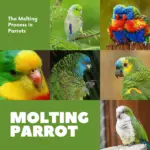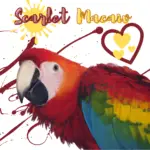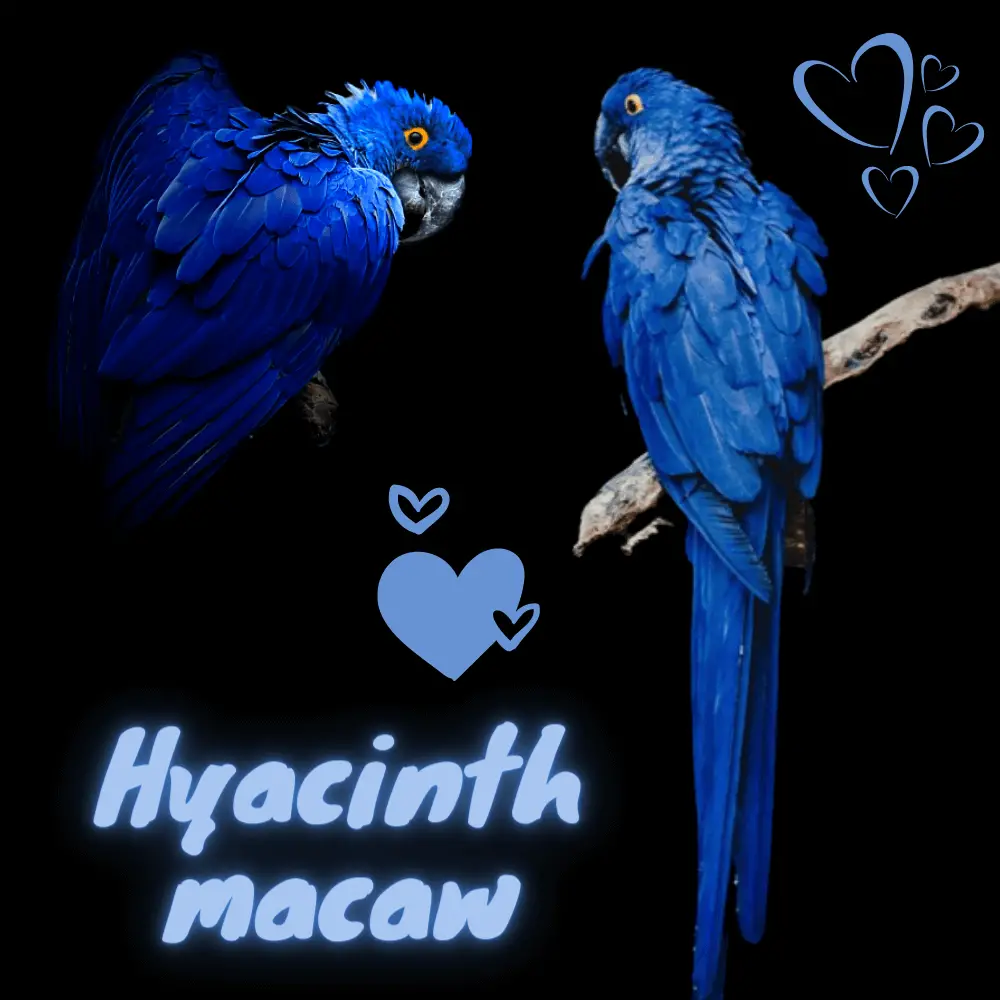
Hyacinth macaw The “Blue Macaw, Hyacinth macaw” is an original parrot (Central and Eastern South America). With a height of 100 cm, it is considered the longest than any other species of parrot.
The hyacinth macaw, or hyacinthine macaw, more commonly called the “Blue macaw” is a parrot native to central and eastern South America. With a length of about 100 cm, it is longer than any other species of parrot.
Cobalt blue throughout, more violet on wings; undersides of flight-feathers and tail grey; bare orbital ring and strip at the base of lower mandible yellow. Immature has a shorter tail and paler bare skin.
Anodorhynchus hyacinthinus
| Reign | Animalia |
|---|---|
| Branch | Chordata |
| Class | Aves |
| Order | Psittaciformes |
| Family | Psittacidae |
| Kind | Anodorhynchus |
Species
( Latham, 1790 )
IUCN conservation status

VU: Vulnerable
The Hyacinth Macaw ( Anodorhynchus hyacinthinus ) is a species of bird belonging to the family of Psittacidae.
Systematics History
Populations in S of the range have been separated as race maximiliani, but differences from others minute and clinal. Monotypic.
Hyacinth macaw Description
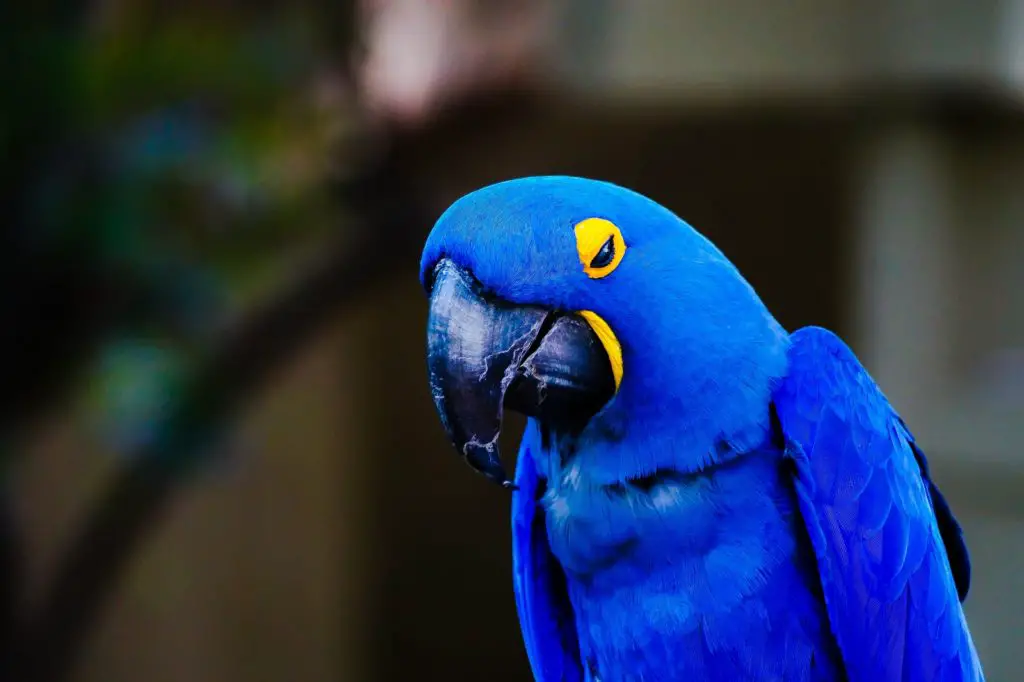
The Hyacinth Macaw’s plumage is cobalt-blue, with a bare yellow area around the eye and lower jaw of the beak; the blue is slightly darker on the wings; the underside of the tail and the wings are blackish.
Its iris is dark brown, and its legs dark gray. Anodorhynchus hyacinthinus has a very powerful voice. It is a hardy species once well acclimatized.
It is the largest of all psittacines, its size reaches 1 meter in adulthood.
Hyacinth Macaw (Anodorhynchus hyacinthinus) Physical description
It is a large splendid parrot and dazzlingly imposing, its plumage is cobalt blue; the areas around the eye as well as the lower beak are yellow, the blue becomes darker on the wings which gives it a superb color gradient,
by observing this bird you can see the blackish color of the underside of the wings; the black bill is incredibly powerful. The iris is dark brown and the legs are dark.
Hyacinth macaw size
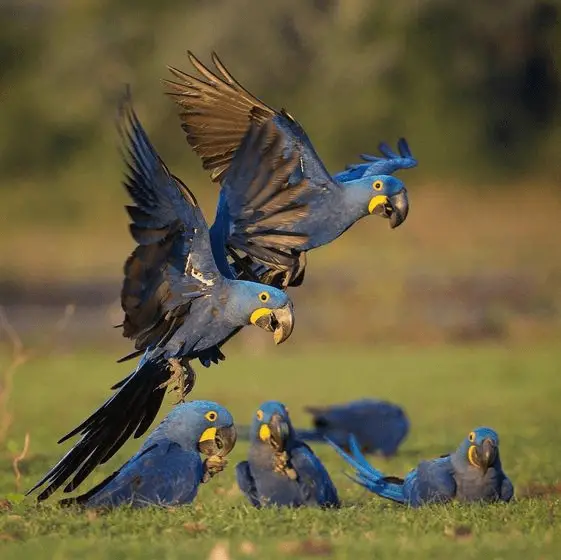
Hyacinth Macaw Habitat
The hyacinth macaw lives mainly in Brazil: Cerrado, Pantanal, and neighboring regions of Bolivia and Paraguay.
The large parrots can still be found in three areas of Brazil. One population lives in eastern Amazonia, along the Rio Xingu, Rio Tapajós, and Tocantins rivers, and another is native to the Cerrado region.
However, the world’s largest population is found in the Pantanal wetlands, in the Mato Grosso and Mato Grosso do Sul area.
Hyacinth macaws prefer landscapes similar to lowland forest, called várzeas, as well as savannas and rainforest fringes
Distribution
Apparently isolated populations from NC to SC Brazil, ranging into extreme E Bolivia and NW Paraguay; formerly present in Amapá (N Brazil), and possibly still so.
Movement
Seasonal displacements over large distances are strongly indicated by fragmentary evidence from Lower Amazon, apparently geared to plant phenology.
Hyacinth Macaw Food
Hyacinth Macaw feeds on Brazil nuts, palm nuts, and other various nuts, unshelled peanuts, fresh fruits, and greens.
As food specialists, Hyacinth Macaws feed almost exclusively on the hard seeds of some endemic palm trees, such as Attalea and the Macauba palm.
These are easily cracked with the help of a strong beak. The hyacinth macaw feeds mainly in trees, but it also picks up fallen fruit and nuts from the ground. It searches for food in the morning and evening hours.
Reproduction
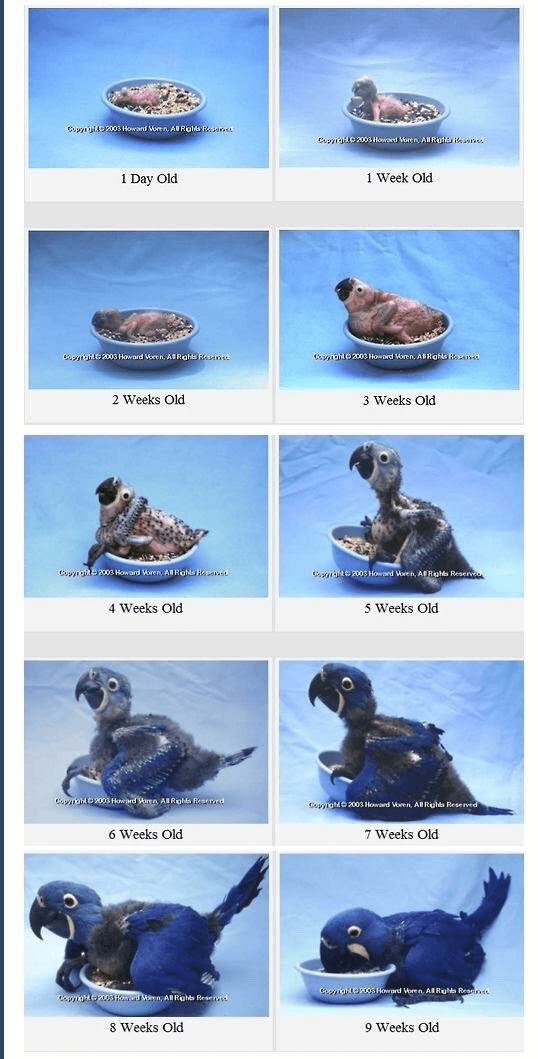
They are sociable birds and live in small family groups consisting of several pairs and they’re young.
Hyacinth macaws are monogamous and stay together for life. Between July and December, the breeding pairs nest in large tree cavities, particularly of Mandovi trees or stink trees.
The clutch usually consists of two eggs, but usually, only one chick fledges. During the incubation period, which lasts 28 to 30 days, nearly one in four eggs (24 percent) fall victim to nest predators.
After hatching, the nestlings, which are born naked and blind, remain in the nest for about 107 days. The complete separation from the parents occurs only after 12 to 18 months.
During the entire breeding season, the female is solely responsible for the clutch, while the male looks after the foraging. The juveniles reach sexual maturity at the age of three.
Jul–Dec. Nest in a hole in a tree in lower Amazon and Pantanal, usually one of only three species in latter (and chiefly Sterculia apetala), since only these reach sufficient size; otherwise dead palm trees and stubs commonly provide sites;
in NE Brazil nests in the cliff. Eggs 2, sometimes 3; incubation 27–30 days; chicks have initial down whitish, secondary down greyish brown; nestling period generally 105–110 days. Usually only one young fledges, although success appears to vary between years.
Hyacinth Macaw Baby
Hyacinth macaw Breeding
This parrot is relatively rare inbreeding and is also becoming so in its natural state: in a few decades, it has fallen from 100,000 to less than 2,000 and is the subject of a captive multiplication program.
He lives in the rainforest and often stays far from cities. Also called the Great Blue Macaw, it is subject to trade, hunting, and poaching, which has reduced its population.
Several programs are underway to try to preserve the species and the population of Hyacinth Macaws. It is hunted for its feathers which are used in particular to make hats.
Hyacinth macaw for adoption
SOURCE:MARLENE MC’COHEN
Hyacinth macaw lifespan
Life expectancy for hyacinth macaw is up to 90 years in captivity and around 25 years in the wild.
Hyacinth macaw Pet
Europe authorizes the sale of young people born in captivity and from the second generation. It is a good thing to stem the importation of wild birds, but these will be excluded from any breeding.
The dietary requirements of the hyacinth are very specific: it feeds mainly on the fruits of a variety of oil palm. This diet is supplemented with berries and fruits. Because of this specificity, the survival of the hyacinth depends on the integrity of its habitat.
The last macaw of Spix (“cousin” of the hyacinth) died in the year 2000. All the specialists of the Psittacidae agree that the hyacinth will be one of the next macaws on the list of extinct species.
We took these photos at the Biodôme in Montreal. All the animals presented in this place were born in captivity.
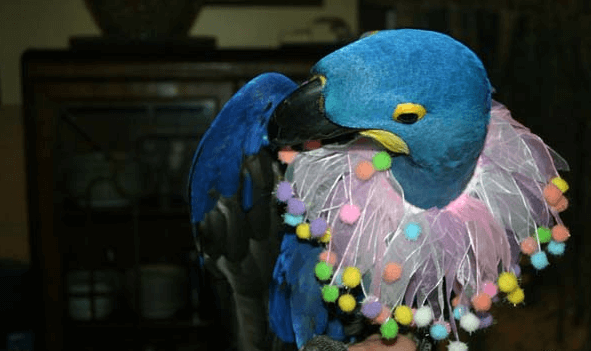
The hyacinth macaw lives on an immense territory in sparse groups. The Pantanal region appears to be that which still shelters a significant population of “hyacinth”.
This flooded region is protected from cultivation, but its subsoil is very rich in minerals … and water from the Pantanal is pumped to water other regions during the dry season.
According to an article published in “PsittaScene” (n ° 52, August 2002), the wild population is estimated at 5000 individuals, and the protection actions carried out since 1987 have paid off. However, its natural habitat is still very threatened.
Hyacinth macaw Care
Care should be taken because before looking for a breeder, check with animal rescue organizations and adoption agencies to see whether a bird has been abandoned by someone unable to care for it. Beyond that, macaws are not commonly sold in pet stores, so look for a breeder who specializes in this specimen.
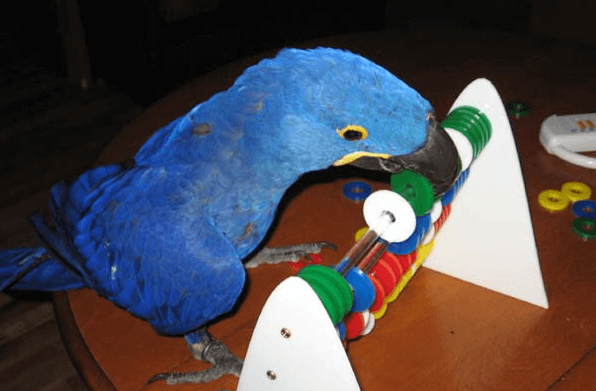
These birds require more time and attention than other species, so hyacinth macaws are not the right pets for everyone.
Tall, handsome, and intelligent, they can be quite flirty, but resist the temptation to bring back a hyacinth without giving it much thought. Caring for this bird is a huge undertaking that requires a long time commitment.
As you would expect with such a large bird, a hyacinth macaw requires a spacious space to live. There are very few commercial cages large enough for this bird, and almost none can get out.
Many owners find that a custom-made cage is necessary, although a full parrot room is even better. This bird needs space to fly, even if it has had its wing feathers cut off.
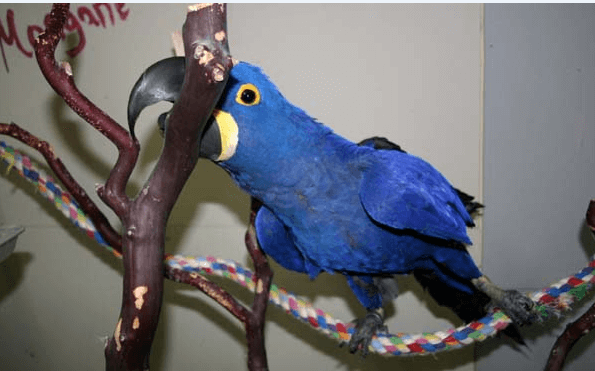
Most ordinary cages can easily be turned into rubble by the powerful spout. If you need to keep the bird in a cage, the best choice is a stainless steel cage.
Stainless steel cages are much more durable and durable, and the benefits of having it for years outweigh the costs in the long run. A stainless steel cage is a worthwhile investment.
Hyacinth macaws can be very destructive and it is essential that the cage has plenty of wooden toys and branches to chew on. You should expect to replace them frequently.
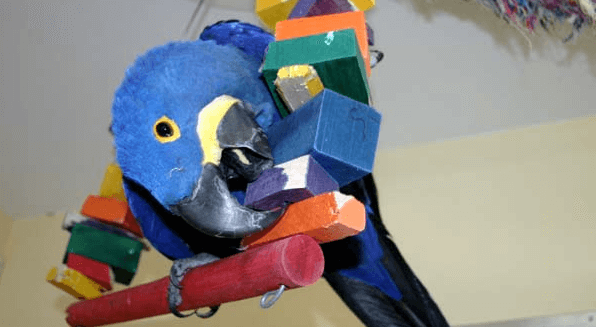
The beak of a hyacinth macaw is a powerful tool, which means that they should be taught early on not to “put in the mouth” their human caregivers, even gently.
Fortunately, they are generally quite docile and easy-going and seem to enjoy learning and the company. Like virtually all parrots, the crested macaw is a highly social animal that requires a lot of interaction with its human caregiver to be emotionally happy.
Neglected and confined birds are often described as “neurotics”, doomed to screaming, destructiveness, and self-mutilating behaviors such as feather-picking.
If they are given a lot of attention, they will prove to be among the friendliest of the macaw species, extremely interested in humans.
A hyacinth can learn a few words and phrases, although it is not the most widely spoken macaw language, it repeats it over and over again. They are very intelligent and can even learn to use these words in the appropriate context.
Feeding the Hyacinth macaw
In the wild, hyacinth macaws feed primarily on fruits, green vegetation, and nuts, especially the nuts of the acute and bocaiuva palms. Its powerful beak can even crack coconuts.
In captivity, they eat well with fruits, vegetables, leafy greens, and plenty of nuts, especially macadamia nuts, as they require more carbohydrates than other parrot species. The hyacinth diet for pets can be supplemented with specially formulated, species-specific granules.
Hyacinth macaws have a wingspan that can reach 4 feet. They should therefore be given enough time to exercise and room for a good stretch. It’s a good idea to give a hyacinth a minimum of one to two hours per day in a gym or other safe place per day to maintain its muscles.
These birds also need to chew to maintain their beaks and jaws. Therefore, many chew toys are essential for these large, beautiful birds.
Large toys that can withstand the flapping of a strong beak are a good choice, as are toys that contain thongs or pieces of leather.
The bird’s impressive beak has evolved to crack large nuts found, and it’s instinctive for them to use it to shred and chip hard objects.
Common health problems
The hyacinth can be invaded by the beak if it does not have a permanent supply of toys and branches to destroy. Like other macaw species, hyacinth can be sensitive to the following factors:
- Proventricular dilation disease (macaw atrophy)
- Psittacosis
- Papillomas
The key to good health with a Hyacinth Macaw is providing it with a diet that meets its special needs, along with regular check-ups by an avian veterinarian.
Hyacinth Macaw Talking
SOURCE:Unicovia
Hyacinth macaw Sounds
Very loud croaking and screeching sounds including ‘kraal and screeching ‘trara‘ warning cry, both in flight and perched. Whilst e.g. settling at communal roost, birds also produce scolding, yapping, and growling sounds. Flocks can produce considerable noise.
hyacinth macaw price
The Hyacinth Macaw parrot is a jet-blue parrot from Central and South America which, according to Singaporean broadsheet Straits Times, costs $40,000
Conservation Status

VULNERABLE. CITES I. This species was reduced to an estimated 3000 birds by the massive illegal trade in the period 1970–1990, with possibly as many as 10,000 being taken from the wild in the 1980s alone.
In 1987 the species was placed on Appendix I of CITES, but for a time this only stimulated greater demand. Now reduced to three isolated populations in E Amazonia, the Gerais and the Pantanal, Brazil, with marginal occurrence in Bolivia and perhaps Paraguay.
Stronghold is the Pantanal, where its range has expanded and population has shown signs of recovery since 1990, probably as a result of conservation projects.
In contrast, those of E Amazonia and the Gerais have continued to decline, from an estimated 1500 individuals in 1986 to 1000 in 2003.
No hard population data, but the total population was estimated at 6500 individuals (equivalent to 4300 mature birds) in 2003, of which 5000 were in the Pantanal and around 200 in Bolivia.
In the 1990s several long-term studies of the species started, in part coupled with conservation initiatives, often involving ecotourism, environmental education, and nest-box deployment, at certain ranches in the Pantanal.
However, local trapping for feathers and food may persist, as well as the destruction of nest-sites either for farming or to obtain birds and indeed general habitat loss throughout the species’ range continues to decrease its survival prospects.
Uplisted to Endangered in 2000 because the population has decreased very rapidly in the recent past and the threats from habitat loss and illegal trapping for the cagebird trade remain;
downlisted to Vulnerable in 2014 because population declines had not been as rapid as feared BirdLife International (2014) Species factsheet: Anodorhynchus hyacinthinus.
Another macaw type

